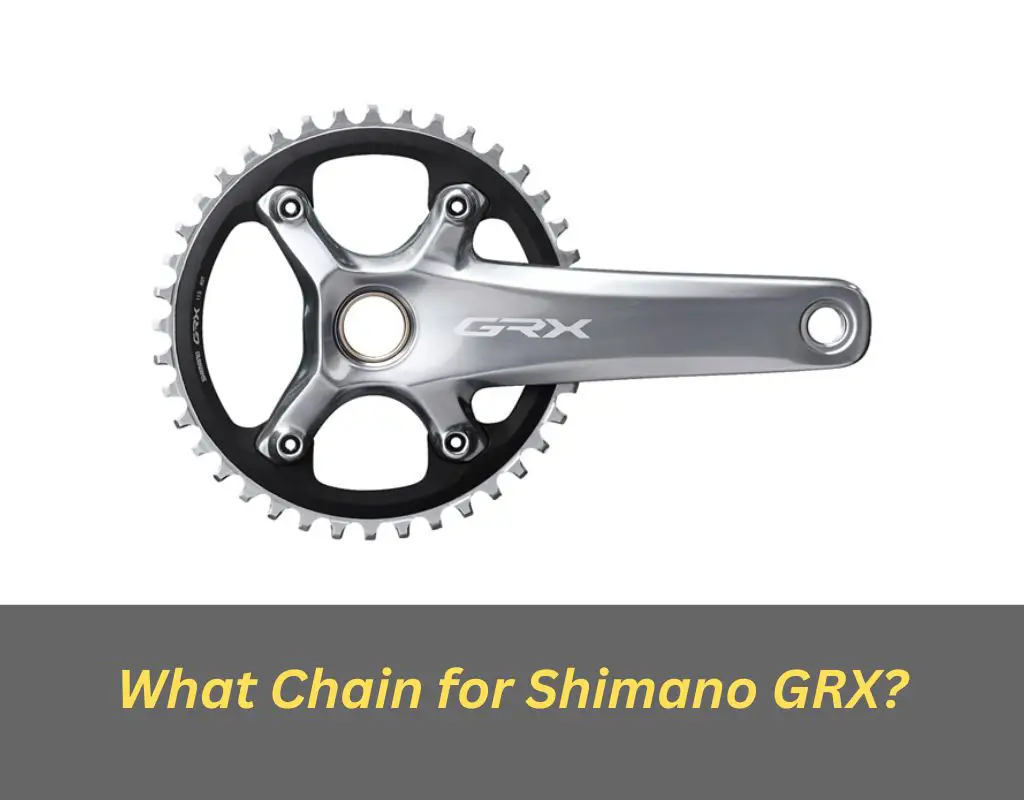
If you are looking for a new chain for your Shimano GRX gravel bike, you might be wondering what are the best options and how to choose the right one.
We will explain some of the factors that affect chain performance and compatibility, and give you some recommendations based on your setup and preferences.
Drivetrain Speed
First of all, you need to know what speed your drivetrain is. Shimano GRX offers 1×11, 2×11 and 2×10 options, and each one requires a different chain. For 1×11 and 2×11, you can use any Shimano 11-speed road chain, such as the HG701 or the HG901. For 2×10, you need a Shimano 10-speed road chain, such as the HG54 or the HG95.
Cassette Range
Secondly, you need to consider your cassette range. Shimano GRX has two types of rear derailleurs: close ratio and wide ratio. The close ratio rear derailleur (RD-RX810 or RD-RX815) can handle cassettes up to 11-34 teeth, while the wide ratio rear derailleur (RD-RX812 or RD-RX817) can handle cassettes up to 11-42 teeth. Depending on your cassette size, you might need a longer or shorter chain.
Chainring Size
Thirdly, you need to think about your chainring size. Shimano GRX has three options for 1×11: 40T, 42T or 44T. For 2×11, it has two options: 46/30T or 48/31T. For 2×10, it has only one option: 46/30T. The size of your chainring affects the chain length and the shifting performance. Generally speaking, larger chainrings require longer chains and smaller chainrings require shorter chains. Also, larger chainrings tend to shift better than smaller ones, especially on the front.
Read Also: What Disc Brake Pads for Shimano 105?
Chain Length Formula
To calculate the correct chain length for your bike, you can use this formula:
Chain length = (chainstay length + front center) / 2 + (largest cog + largest chainring) / 4 + 1
You can measure the chainstay length and the front center with a tape measure, or look them up in your bike’s geometry chart. The largest cog and the largest chainring are the numbers of teeth on your cassette and crankset. The result is the number of links you need for your chain.
For example, if your bike has a chainstay length of 430mm, a front center of 610mm, a cassette of 11-40T and a crankset of 42T, the formula would be:
Chain length = (430 + 610) / 2 + (40 + 42) / 4 + 1
Chain length = 1020 / 2 + 82 / 4 + 1
Chain length = 510 + 20.5 + 1
Chain length = 531.5 links
Since you can’t have half a link, you need to round up or down to the nearest whole number. In this case, you would need a chain with either 531 or 532 links.
To measure your existing chain, you can use a ruler or a chain checker tool. A new chain should measure exactly 12 inches (304.8mm) for every 12 links. A worn chain will measure slightly longer than that, indicating that it needs to be replaced.
How to Install a New Chain?
To install your new chain, you can use a chain tool or a quick link. A quick link is a special connector that allows you to join the ends of the chain without using a tool. Shimano chains come with their own quick links, called Quick-Link or SM-CN900-11. You can also use quick links from other brands, such as KMC or SRAM.
Installing and Removing a Quick Link
To use a quick link, you need to make sure that both ends of the chain have inner plates (the ones with holes). If one end has outer plates (the ones with pins), you need to remove them with a chain tool. Then, insert one half of the quick link into one end of the chain, and the other half into the other end. Align them and pull them together until they click into place. To secure them, rotate the crank until the quick link is on the top part of the chain and apply some pressure on the pedals.
To remove a quick link, you can use a pair of pliers or a special tool designed for that purpose. You need to squeeze the two halves of the quick link together and slide them apart.
Read Also: What is Shimano Mineral Oil made of?
Best Chains for Different Scenarios
Here are some of our recommendations for the best chains for different scenarios:
Shimano HG901 11-speed chain
If you want performance and durability, go for the Shimano HG901 11-speed chain. It has a special coating that reduces friction and wear, and it works well with any Shimano 11-speed cassette and crankset.
KMC X11 11-speed chain
If you want value and compatibility, go for the KMC X11 11-speed chain. It has a similar design and quality as the Shimano chain, but it is cheaper and comes with a reusable quick link. It works well with any Shimano 11-speed cassette and crankset.
YBN SLA 11-speed chain
If you want aesthetics and customization, go for the YBN SLA 11-speed chain. It has a gold color that matches the Shimano GRX logo, and it comes in different lengths to suit your bike. It also has a smooth and quiet performance, and it works well with any Shimano 11-speed cassette and crankset.
Conclusion:
When choosing a chain for your Shimano GRX gravel bike, consider the drivetrain speed, cassette range, and chainring size. Opt for a chain that matches your specific setup and preferences. Some recommended options include the Shimano HG901 11-speed chain for performance and durability, the KMC X11 11-speed chain for value and compatibility, and the YBN SLA 11-speed chain for aesthetics and customization. Remember to measure chain length accurately and follow proper installation techniques for optimal performance.
